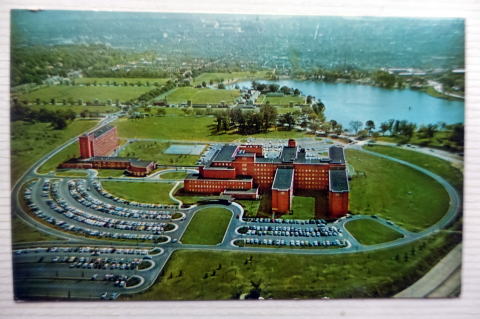Social Backgrounds of Washington, D.C.
  
A rehearsal scene of the big concert at the Lincoln Memorial, in October
2010
Washington has a growing, diversified economy with an increasing percentage
of professional and business
service jobs. The gross state product of the District in 2008 was $97.2 billion,
which would rank it No. 35
compared to the 50 U.S. states. In 2008, the federal government accounted
for about 27% of the jobs
in Washington, D.C. This is thought to immunize Washington to national
economic downturns because the
federal government continues operations even during recessions.
The District has been growing industries not directly related to government,
especially in the areas of
education, finance, public policy, and scientific research. George Washington
University, Georgetown University,
and Washington Hospital Center, Howard University, and Fannie Mae are the
top five non-government-related
employers in the city.
As in many cities, gentrification is revitalizing Washington's economy,
but its benefits are unevenly distributed
throughout the city, and it is not directly helping poor people. In 2006,
D.C. residents had a personal income
per capita of $55,755, higher than any of the 50 U.S. states. However,
19% of residents were below the
poverty level in 2005, which highlights the economic disparities in the
city's population.
 
The Basilica of the National Shrine of the Immaculate Conception in Washington,
D.C.
This is the largest Roman Catholic church in the United States and North
America.
 8 mm film: The Basilica of the National Shrine 1960 8 mm film: The Basilica of the National Shrine 1960
 
Washington Hospital Center
The District's 16 medical centers and hospitals make it a national center
for patient care and medical research.
The National Institutes of Health is located in nearby Bethesda, Maryland.
Washington Hospital Center (WHC),
the largest hospital campus in the District, is both the biggest private
and non-profit hospital in the Washington
area. Just next to the WHC is the Children's National Medical Center. Children's
is among the highest ranked
pediatric hospitals in the country according to U.S. News & World Report.

A Washington Hospital Center Complex 1960: A nurses-quarter in the left
side of the main building
ワシントンホスピタルセンター
 Washington Hospital Center 1960-1961 Washington Hospital Center 1960-1961
 
Downtown Washington, D.C.
 
Downtown Washington, D.C.

Source: University of Texas Libraries
 
(L) The District of Columbia is the small area between Maryland and Virginia.
(R) L'Enfant Plaza is in the center of an area crowded with federal buildings,
and is a transfer point allowing
passengers to cross with ease the Potomac between Virginia and central
Washington, making it a very busy station.
 
Route 1 and Route 50 is passing through the downtown Washington, D.C.
 
This photo shows a rent-bicycle station in the Washington, DC area. Daily
fee ranges $25 to $35.
 
A map and street of Anacostiaアナコスティア地区
  
Police officers are keeping a close eye on a criminal at the exit of Metro
station of Anacostia.アナコスティア地区
During the violent crime wave of the early 1990s, Washington, D.C. was
known as the murder capital of the
United States and often rivaled New Orleans in the number of homicides.
The number of murders peaked in
1991 at 479, but the level of violence declined drastically in the 1990s.
In total, violent crime declined nearly
47%, between the years of 1995 and 2007. Property crime, including thefts
and robberies, declined by
roughly 48% during the same period.
Like most large cities, crime is highest in areas associated with illegal
drugs and gangs. The experts point to
the city's changing demographics as a reason why crime in the District
is being overshadowed by increased
violence further east across the border in Maryland.
Source: Wikipedia
ワシントンD.C.では政府関連の産業、特に教育、金融、科学研究の分野が成長している。非政府関連としては、
ジョージ・ワシントン大学、ジョージタウン大学、ワシントンホスピタルセンター、ハワード大学、連邦住宅抵当
公庫が市内における雇用主体の上位5位である。ワシントンD.C.の失業率は市の中で大きく異なっている。2008年
5月において、北西地区北部の裕福な第3地区では失業率が1.7%であったのに対し、南東地区の貧しい地区では
17.2%であった。2005年において、アメリカの50州と比較すると、ワシントンD.Cで.は1人当たりの収入が高い
ものの、貧困率もまた高く、全住民における経済的格差を際だたせている。
ワシントンD.C.には、16の医療センターと病院があり、患者のケアと医学研究の全国的な中心地となっている。
アメリカ国立衛生研究所は、D.C.に接するメリーランド州ベセスダにある。ワシントン・ホスピタル・センターは、
D.C.で最大の敷地を持つ病院であり、私立病院としても、非営利病院としても最大である。そのすぐ隣には、国立
子ども医療センターがある。同センターはアメリカ国内で最も高いランクを与えられている小児科病院の一つである。
1990年代初頭に凶悪犯罪の波が訪れた時、ワシントンD.C.はアメリカの「殺人首都」(murder capital)として
知られ、殺人事件の発生数において、ルイジアナ州ニューオーリンズと、しばしば肩を並べていた。計画的殺人の
発生件数は1991年に482件であったが、1990年代を通じて犯罪の激しさは大幅に緩和した。2006年までに、
市内における殺人の件数は169件にまで減少した。窃盗や強盗など各種の財産犯も、同様の割合で減少した。
多くの大都市と同様、犯罪の発生率が高いのは違法薬物やギャングと関係のある地域である。より富裕な地域で
あるワシントンD.C.北西地区では犯罪発生率は低いが、東に行くに従って増加する。特に危険なのは市南東部の
アナコスティア地区である。ワシントンD.C.で起こる殺人の約3分の1は、このアナコスティア地区内で発生して
いる。1950年代までは白人の中流階級の住宅地であったが、高速道路の発達により人口が郊外へ流出、住民層が
大きく変わり、治安が著しく悪化した。現在、この地区の黒人人口率は92%に達する。また、市の北東部も
治安の悪い地域があり、市境を越え、メリーランド州側にも広がっている。
Washington, D.C.
 Arrival to Washington, D.C. Arrival to Washington, D.C.  The U.S.capitol The U.S.capitol  Metro railway Metro railway  Union Station Union Station  Museums Museums  Socioeconomic aspect Socioeconomic aspect
 Smoking ban in Washington, D.C. Smoking ban in Washington, D.C.
Ontario,Canada and Michigan,USA
 Detroit Airport Detroit Airport  Niagara Falls Niagara Falls  Toronto Toronto Upper Michigan Upper Michigan  Lower Michigan Lower Michigan
 Smoking ban in the District of Columbia Smoking ban in the District of Columbia
(注)筆者は1960年から1年間、ワシントンホスピタルセンターに勤務しており、2010年10月にこの地を訪問している。
ワシントンDCで一番と言われる私立総合病院は建て替えられ、今 MedStar Washington Hospital Centerとなっている。
50年前の面影を求めて訪問したが、当時の洗練された病院入口や、毎日利用した、大きな窓に広大な緑の芝生の広がる
1階の素晴らしいカフェテリアもなく、いつも自分の車を止めておいた駐車場は、無機質な味気のない立体化されたもの
と変わり、敷地一杯に建てられた、どこにもあるような新しい病院建物を見て、とめどない幻滅感を味わされた。
1960年の全体像の写真は上に掲載されている。その後、市内の治安も悪化し、夜も自由に歩けた当時が懐かしい。
この病院はハリソン・フォード主演の映画「ランダム・ハーツ」の入院シーンにも出ている。
 コロンビア特別区・首都ワシントンの社会 コロンビア特別区・首都ワシントンの社会
 2010年10月執筆 医学博士 宮本順伯 2010年10月執筆 医学博士 宮本順伯
★This Web site is link-free.
The article was written and photographs were taken by Junhaku Miyamoto,
M.D.,PhD.,
in October 2010. Information was added in December 2021.
Copyright (C) 2010 Junhaku Miyamoto, PhD. All right is reserved.
|